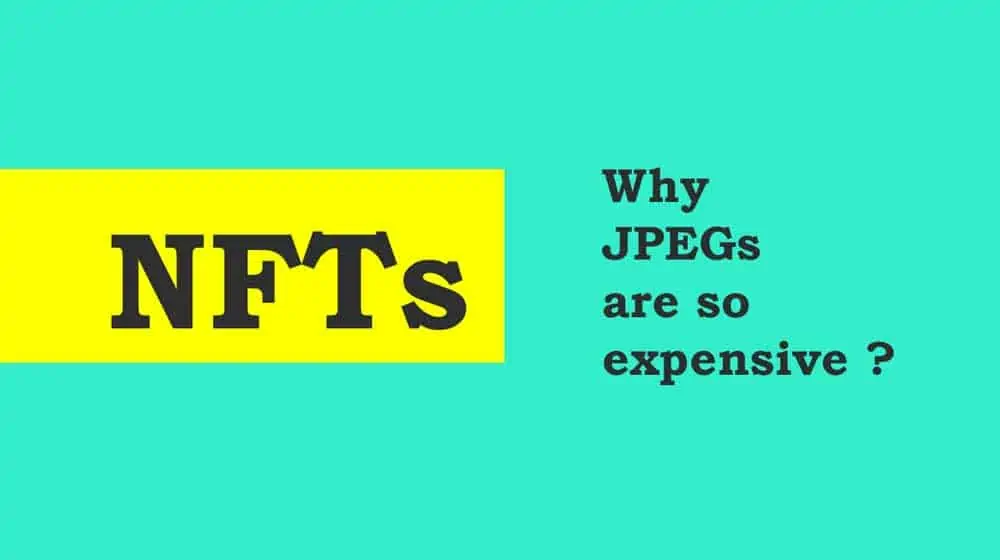NFTs are digital crypto-assets created on a blockchain. Any item can be made into NFTs, such as videos, images, audio, real estate, sports cards, and even tweets. The collectible item created as an NFT is given a unique code, which makes it unique. This code makes it impossible to duplicate or replicate NFTs as digital assets.
In recent years, NFTs have become very popular. The main reason for this is the soaring valuations NFTs have recently fetched. Today, it is common to see some NFTs sell for millions of dollars. For instance, an NFT Beeple sold for as much as $69 million. Although NFTs are unique digital assets, seeing images sold for millions of dollars is mind-blowing. It is difficult to understand why JPEGs will be expensive and command such hefty prices. To understand what gives NFTs their value, one must understand the true meaning of Non-fungibility and the NFT value frame.
What Are Non-fungible Assets?
In economics, we have fungible and non-fungible assets. Fungible assets are assets like money that have units that can be interchanged. For example, a $20 note can be interchanged for two $10 notes without losing their value. However, non-fungible assets can’t be interchanged at all. This implies that non-fungible assets have unique properties that ensure they can’t be duplicated or exchanged with something else.
An example of a traditional non-fungible asset is paintings. For instance, there can only be one original Mona Lisa, irrespective of how much people try to replicate it. This means that non-fungible assets are one-of-a-kind. But the problem with traditional non-fungible assets is that identifying the original from the fake item is a challenge. It must be subjected to some test.
Based on this, it is easy for people to be fooled. This is what makes non-fungible tokens different from traditional digital assets. NFTs are truly one-of-a-kind non-fungible assets that have been digitized. They can be purchased or sold but can’t be divided or duplicated.
Why Are NFTs So Expensive?
Understanding how NFTs work will help us understand why they are valuable. Traditional artworks like the Mona Lisa or a Picasso piece of art are valuable because they are one-of-a-kind. On the other hand, digital files like JPEGs can be continually duplicated. However, NFTs are not just JPEGs. The uniqueness of NFTs is that they can’t be replicated, as no two NFTs can ever be the same. The fact that NFTs are non-fungible indicates that the ownership lies solely with the owners. Their authenticity can be verified.
Every NFT created on a blockchain has its unique code and a record on that blockchain. The unique code and record can’t be forged. Therefore, NFTs are tokenized artwork used as a digital certificate of ownership. It is this digital certificate that is bought and sold at a fee. Mostly, NFTs contain smart contracts. This smart contract allows the artist to earn royalties on any future sales of the token.
NFT Value Framework
The value of any NFT depends on the asset it represents. However, value is weighted across four components: utility, future value, ownership history, and liquidity premium. NFT investors mostly use this framework to evaluate the asset’s value they invest in.
Utility
The utility of an NFT describes what it can be used for in real life. This gives the NFT some value. At the moment, there are two significant NFT categories with high utility values. NFTs in these categories can be used in real life to solve problems or satisfy users’ needs. For instance, tickets in the form of NFTS can be used to access real-life events, while game NFTs are used to access specific real games. However, realizing interoperability is challenging. Based on this, about 90% of the NFT game fan base plays only a single game. The reason for this is that the NFT game ecosystem is not sufficient to meet the needs of players. Game developers need to create a massive ecosystem of NFT games with attractive use cases to solve this problem.
Future Value
NFTs are also valued based on what they are projected to be worth in the future. This is mainly derived from future cash flow and valuation changes. Interestingly, the future value of an NFT is mainly driven by speculation. In fact, in most cases where NFTs have sold for millions of dollars, the price was driven by hype and speculation. For instance, in December 2017, an NFT CryptoKitty #18 surged in price from 9 Eth to 253 Eth within three days. The price surge was due to speculations about the digital asset.
Some financial experts believe that valuing NFTs based on speculation can have a negative effect on the asset in the long run. If the hype is lost, the NFT loses its value. However, it is human nature to speculate and hype assets. In fact, if the atmosphere is right, NFT developers and holders can profit from speculation. They can increase the price of their assets and earn more.
Another crucial aspect of valuing NFTs based on their future value is the future cash flow they promise. These are the royalties or royalties the creator or holder stands to earn from future sales of the asset. If the valuation of the future cash flow looks promising, the future of the asset increases.
Ownership History
When valuing NFTs, people look at the identity of the creator or previous owners. The more impressive the ownership history, the more value will be given to the asset. For instance, NFTs created by famous creators such as celebrities, renowned artists, or public figures automatically command high value. However, it is challenging to know the previous owners of a particular NFT. Although the exchange history of the asset can be tracked on the marketplace where it was sold, the identity of the previous owners can’t still be revealed. Thankfully, the ownership value of NFTs can be improved. NFT holders or creators can co-operate with famous people, companies, or brands on their NFT projects. This will see the value of the asset surge drastically.
Liquidity Premium
The final matrix for valuing NFTs is their liquidity premium. NFTs with high liquidity have a higher value. Hence, the liquidity premium of an NFT determines the ease of selling the asset. This is why assets built on-chain usually have a higher value than tokens created off-chain. For instance, ERC standard NFTs have higher value because they can be sold easily without issues on secondary markets. This automatically increases the number of interested buyers.
When the utility, future value, ownership history, and liquidity premium of an NFT are combined, it is easier to estimate its actual value. NFTs with high utility, future value, ownership history, and liquidity premium will easily command high value.









